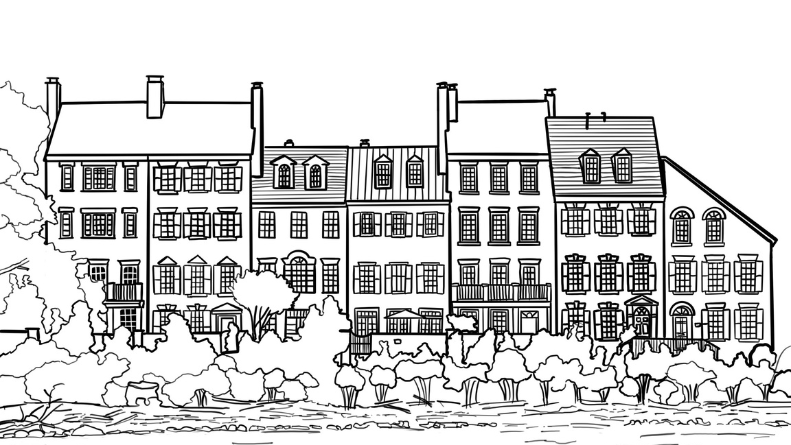Redefining Construction: Towards a Low-Carbon Future
We’re living in a time where the gentle murmurs of concern for our planet have swelled into a cacophony of urgency, signalling a critical juncture for redefining the construction industry. At the heart of this turning point lies a question of profound importance: not just about the methods we employ in our building projects, but the very materials that form the backbone of our urban infrastructures. The traditional path we’ve trodden, laden with materials and practices steeped in carbon, threatens to chain our future to a bleak vision marked by environmental degradation.
Imagine, though, a different path—one where the construction industry undergoes a transformative shift. Envision a scenario where innovative materials and green methods become the standard, drastically reducing the carbon footprint of our built environments. The potential for change is immense, promising not only to alter the trajectory of our environmental impact but to redefine the essence of construction itself.
This is no mere daydream. The urgency for this shift is underscored by the alarming pace at which climate change is advancing. It’s a clarion call for the industry to reevaluate and realign its practices with the needs of our planet. The choice before us is stark but clear: continue down the path of excess and disregard, or pivot towards a future where sustainability is at the core of every project.
The Global Push for Urban Expansion: A Double-Edged Sword
Peering into the future, we are met with predictions from the United Nations that paint a picture of a world teeming with nearly 11 billion souls by 2100. This burgeoning population demands an expansion of the built environment that is unprecedented in history—a doubling by 2060. While this growth is essential to house and sustain a larger global community, it also presents a formidable challenge to our planet’s resources and its climatic balance.
The relentless march of urban expansion brings with it a shadow—the looming spectre of climate change, making it imperative to reassess the very foundations upon which we build our cities. It’s a call to arms, not just to brace against the ravages of a changing climate but to actively forge a new path that mitigates our environmental impact. This endeavour stretches beyond mere adaptation; it’s a profound transformation of our urban landscapes to harmonize with the earth’s ecological boundaries.

Embracing Nature: The Shift Towards Renewable Materials
Within the narrative of sustainable construction, a hero emerges in the form of renewable materials, with timber taking center stage. As Jamie Johnson, CEO of FJP Investment, articulately points out, “Without rapid change to the materials, design and practices used, the global construction sector faces a risk of ‘locking in’ a high carbon pathway, as the sector grows to meet global demand for urban environments.” This insight shines a spotlight on timber, not just as a material that passively benefits the environment by sequestering carbon, but as a beacon of a deeper, more harmonious relationship with nature.
Timber’s significance transcends its environmental benefits, symbolizing a paradigm shift towards viewing our natural environment not as a mere supplier of resources, but as a vital, integral partner. This perspective advocates for a departure from the conventional, linear model of consumption and waste, towards a more circular, sustainable approach that respects and replenishes the natural world.
The journey towards embracing renewable materials is not merely a technical or economic challenge; it’s a philosophical realignment of how we perceive our relationship with the planet. It requires us to look beyond the immediate and the convenient, to envision a future where our built environments exist in symbiosis with nature. This shift, driven by a blend of innovation, vision, and responsibility, has the potential to redefine construction in the age of sustainability.
From Linear to Circular: Revolutionizing Construction Practices
The concept of circularity is transforming from a mere buzzword into a bedrock principle guiding the future of construction. This transformative approach reimagines every stage of the building process, from the initial design sketches to the eventual renovation or repurposing of aging structures. It’s an ethos that champions a life cycle for materials that is both sustainable and efficient, aiming to extract the maximum value from each resource while simultaneously reducing waste to a bare minimum.
This revolutionary perspective on construction demands a significant departure from traditional practices. It calls for a holistic revaluation of the industry’s approach, advocating for the use of materials and processes that are not just efficient in the short term but also regenerative over the long haul. This shift towards regenerative practices represents a profound evolution in how we conceive of construction, pushing the industry towards methods that replenish and restore the natural environment.
The move from a linear model, characterized by a take-make-waste mentality, to a circular one is not trivial. It necessitates innovation, foresight, and a willingness to embrace new technologies and methodologies that can transform waste into resources. This paradigm shift towards circular construction is not just about being eco-friendly; it’s about redefining efficiency and sustainability in construction for generations to come.

Steering Towards Sustainability
The role of governmental policy in guiding the construction industry towards a greener future is becoming increasingly evident. Nations are awakening to the critical need for policy frameworks that encourage sustainable practices. In the UK, for example, the Timber in Construction Policy roadmap is paving the way for a more sustainable industry. This initiative, along with similar efforts in France, Sweden, and Switzerland, highlights a concerted push towards minimizing embodied carbon in construction materials and processes.
These diverse policy initiatives, though varied in their specific strategies, converge on a singular vision: embedding sustainability into the very fabric of construction. From the procurement of materials to the demolition or renovation of buildings, the aim is to ensure that every phase of a building’s life cycle is infused with sustainable principles. This alignment of policy with sustainability goals underscores a global recognition of the urgent need to transform construction practices for the betterment of our planet.
Cultivating a Sustainable Future
Embarking on the path to a low-carbon construction industry is undoubtedly challenging, but it is also replete with unparalleled opportunities. This journey calls for more than just the adoption of new technologies; it demands a fundamental cultural shift in our relationship with the built environment. The construction industry stands on the brink of an evolutionary leap, poised to not just respond to the challenges of climate change but to actively contribute to mitigating its effects.
The future envisioned is one where the industry’s advancements go hand in hand with environmental stewardship. By embracing the principles of collaboration, innovation in the use of renewable materials, and a steadfast commitment to circular construction practices, we are laying the groundwork for a future that is in harmony with the natural world. This is a call to action for everyone involved in construction—from policymakers to practitioners, from architects to homeowners—to play a part in shaping a sustainable future.
The urgency of this transformation cannot be overstated. The decisions we make today will determine the kind of world future generations inherit. It is a monumental responsibility, but also an incredible opportunity to leave a legacy of sustainability and resilience. Now is the time to act, to commit ourselves to the principles of sustainable construction, and ensure that our planet remains a vibrant, thriving home for all its inhabitants.
ARE YOU READY TO START INVESTING?
Subscribe to our mailing list now for exclusive deals, investment guides and the latest information from the property market.







